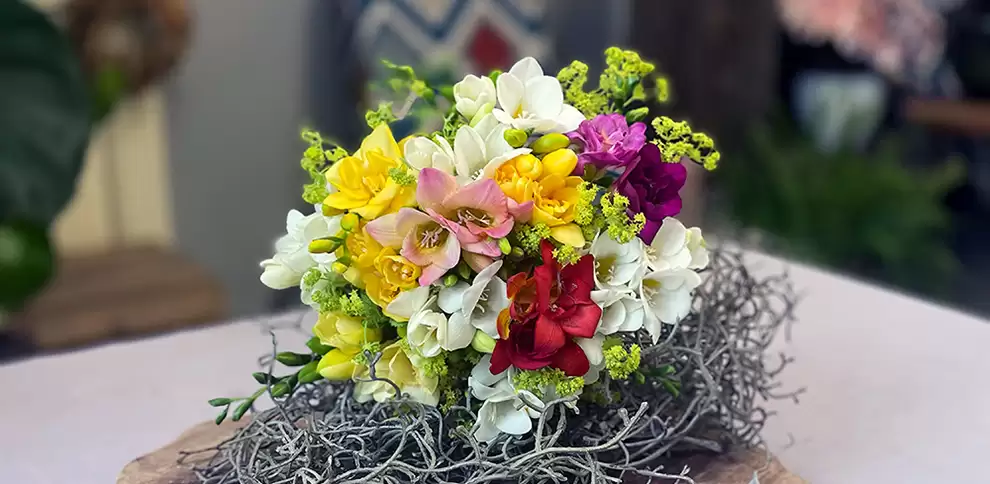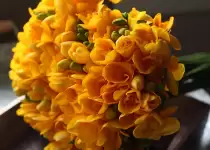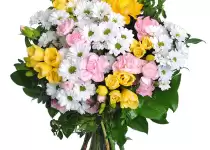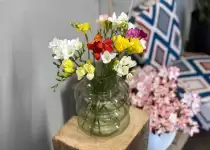Freesias - beautiful flowers with a rich history and versatile use
31.05.2024 | Dana Rohová

History and origin
Freesia was named in honour of the German botanist Friedrich Freese, who lived in the 19th century. Its original home is South Africa, where it grows in the wild on grassy plains and slopes. Thanks to its beauty and unique fragrance, it quickly spread to Europe and other parts of the world. Freesias became popular in gardens and flower markets in the early 20th century and are still popular today for their elegance and variety.
Botanical characteristics
Freesia belongs to the Iris family (Iridaceae) and is characterised by its characteristic fragrant flowers arranged in single-sided inflorescences. The flowers can be white, yellow, pink, red, purple or multicoloured, making them an attractive choice for a variety of arrangements. The plant grows to a height of 30-60 cm and the flowers open gradually, which extends their decorative effect.
Our tip: Did you know that we can deliver express bouquets of freesias all over the Czech Republic, for example in Pardubice and Ostrava within 2 hours.
Species
The most popular species of freesias include:
- Freesia refracta: The most commonly grown species with white, yellow, pink and orange flowers.
- Freesia alba: A white freesia with a delicate fragrance.
- Freesia leichtlinii: Orange freesia with a dark spot on the petals.
- Freesia odorata: Yellow freesia with an intense fragrance.
- Freesia viridis: Green freesia with unusual flowers.
Cultivation and care
Freesias are not very difficult to grow, but they do require some care and attention. Here are the key steps to successfully growing freesias:
Site selection: Freesias prefer semi-shady to sunny sites with well-drained soil. Warm and sheltered locations are suitable, where the plants are protected from strong winds.
Planting: It is important to keep the correct depth and spacing to give the plants enough room to grow.
Watering: Regular but moderate watering is important to keep the soil moist but not waterlogged. Over-watering can lead to bulb rot.
Fertilisation: To encourage growth and flowering, it is advisable to fertilise regularly with a potassium-rich fertiliser. Fertiliser should be applied especially during the growing and flowering period.
Frost protection: In colder areas, bulbs should be removed for the winter and stored in a dry and cool place. Stored bulbs should be protected from frost and moisture.
Pests and diseases
Freesias can be threatened by several pests and diseases. The most common include:
Aphids: It is important to check the plants regularly and apply appropriate insecticides if necessary.
Mildew: Excessive moisture can lead to the development of fungi on leaves and bulbs. Proper watering and good soil drainage are preventive measures.
Bulb rot: Over-watering the soil can cause bulb rot. It is important to ensure proper drainage and avoid waterlogging.
Use in floriculture
Freesias are valued for their aesthetic value and versatile use. They are ideal for:
Bouquets - Their flowers add lightness and elegance to bouquets.
Decoration - They can be part of table decorations, wreaths or ikebana.
Perfume - Freesia essences are used in perfumery for their fresh and floral scent. Freesia scented perfumes are popular for their delicacy and purity.
Attractions
Freesias are a symbol of friendship, innocence and trust. They are often given as a token of sincere friendship and appreciation.
Cut freesias have a long shelf life in a vase, making them ideal flowers for home decoration and commercial use.
There are many hybrid varieties of freesias that have been bred for improved color, fragrance and durability. Hybrid freesias offer an even wider range of colours and shapes.
Conclusion
Freesias are beautiful flowers with a rich history and a wide range of uses. Growing them can be satisfying for both novice and experienced gardeners. With their beautiful flowers and irresistible fragrance, freesias remain a popular choice for gardens, bouquets and decorations around the world. Their symbolism of friendship and innocence adds another dimension to their charm.
We hope this article has inspired you to plant these magical flowers in your garden or include them in your floral arrangements. Freesias will bring you joy and beauty at every turn.


